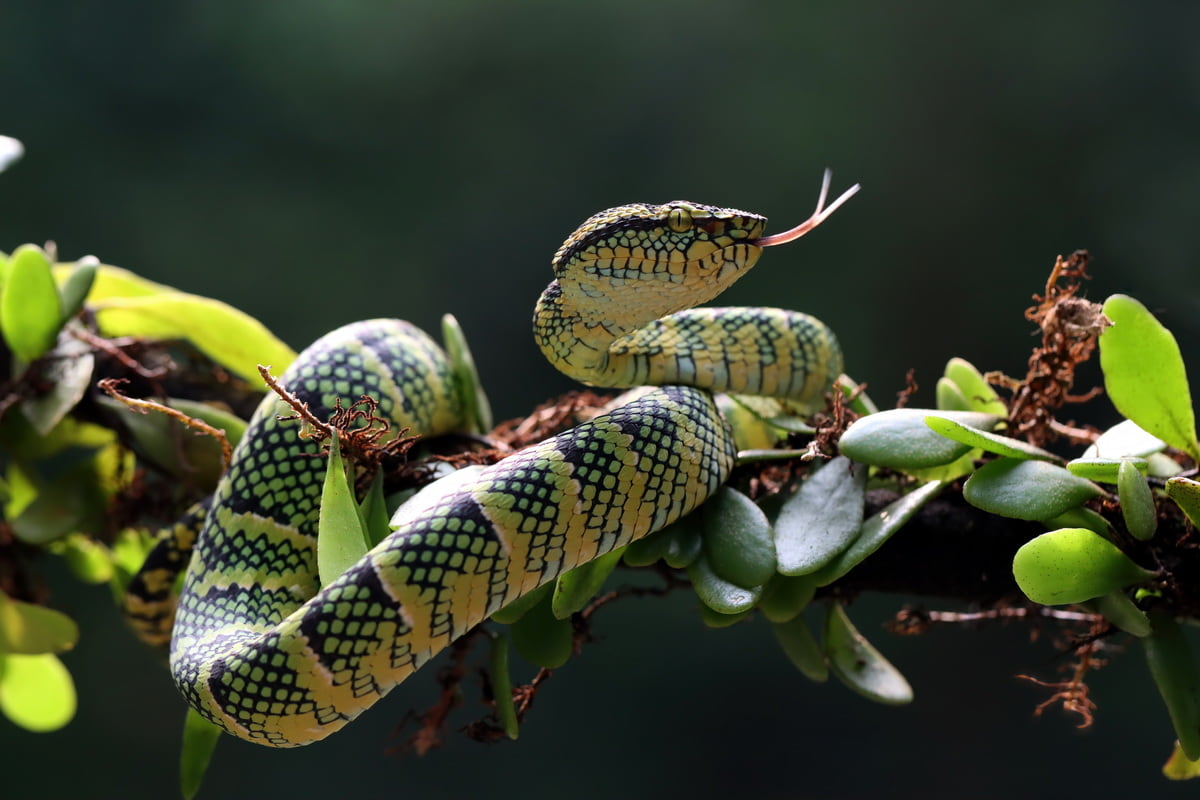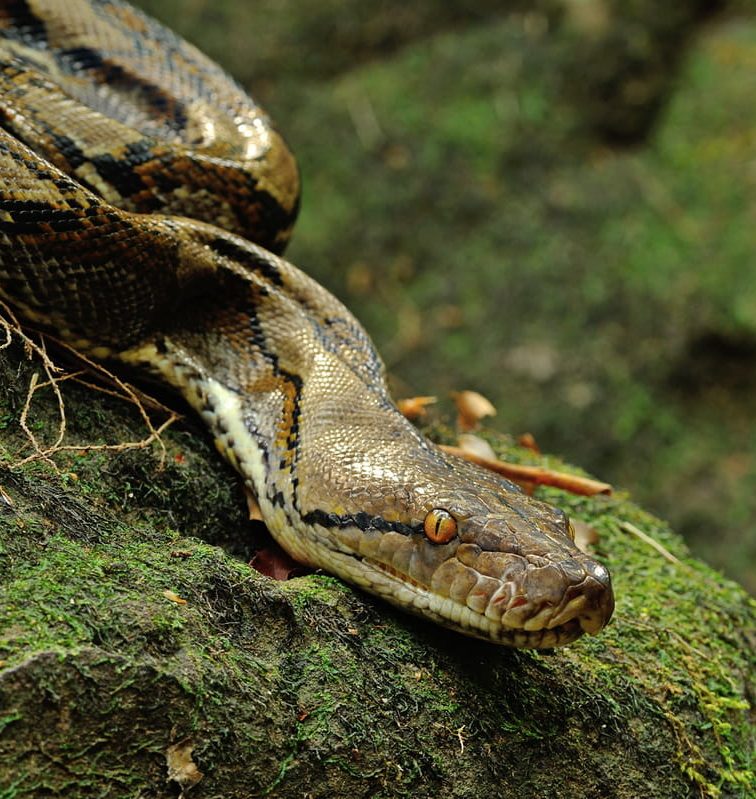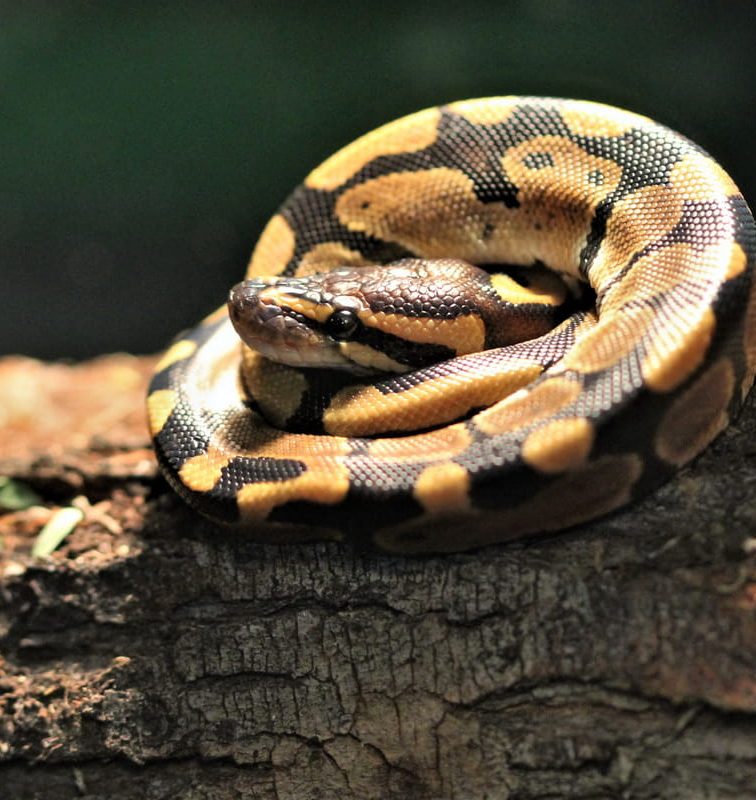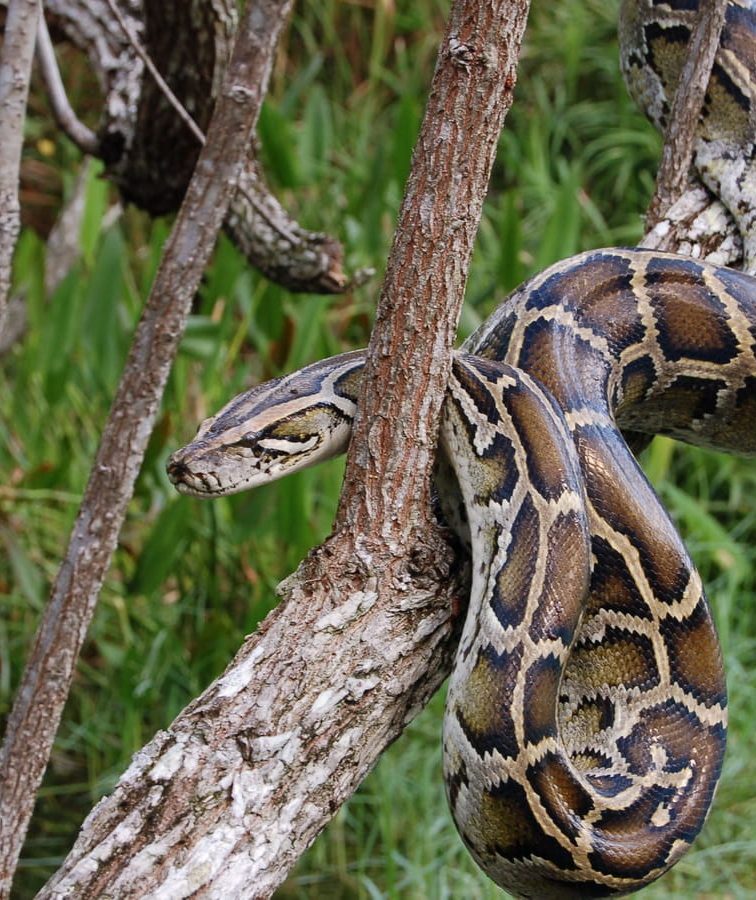Stepping into the heart of the tropical rainforest, you’re entering the world’s oldest living ecosystem, dating back over 70 million years. Among the vast biodiversity, snakes stand out not just for their mesmerizing forms but also for their intriguing behaviors and adaptabilities.
Did you know the Amazon basin houses over 150 snake species alone? And, fascinatingly, about 70% of them aren’t venomous! Now, let’s slither into some more astonishing facts about these rainforest reptiles.
1. The Green Giants: Meet the Green Anaconda
Weighing up to 550 pounds and stretching up to an impressive 30 feet, the green anaconda of South America is the world’s heaviest snake. Found mainly in the Amazon and Orinoco basins, these behemoths have been part of indigenous myths and legends for centuries. In the 1960s, a specimen reported to be 37.5 feet was found in Brazil, though this record remains contested.
Surprisingly, despite their size, anacondas are not venomous. They rely on their sheer strength to constrict and subdue prey, which can include even jaguars!
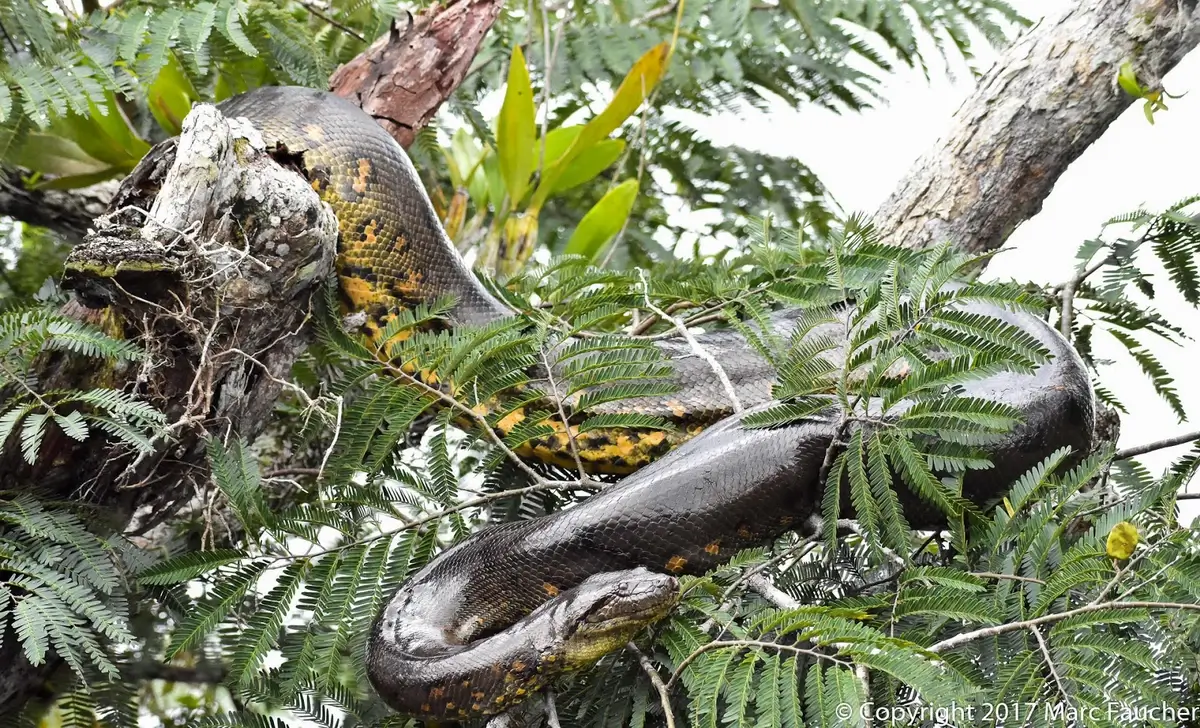
Image: 4.bp.blogspot.com
2. Dancing in the Trees: The World of Tree Boas
Meet the tree boas: rainforest acrobats! In a 2018 study, researchers identified distinct subspecies of tree boas spread across Central and South America. These boas have evolved unique color patterns and tail adaptations over millennia to expertly navigate their arboreal habitats.
One standout is the Amazon tree boa, which comes in more colors than any other snake, from bright reds to brilliant greens. This color variety isn’t just random – it’s nature’s meticulous design to blend with specific niches within the rainforest.
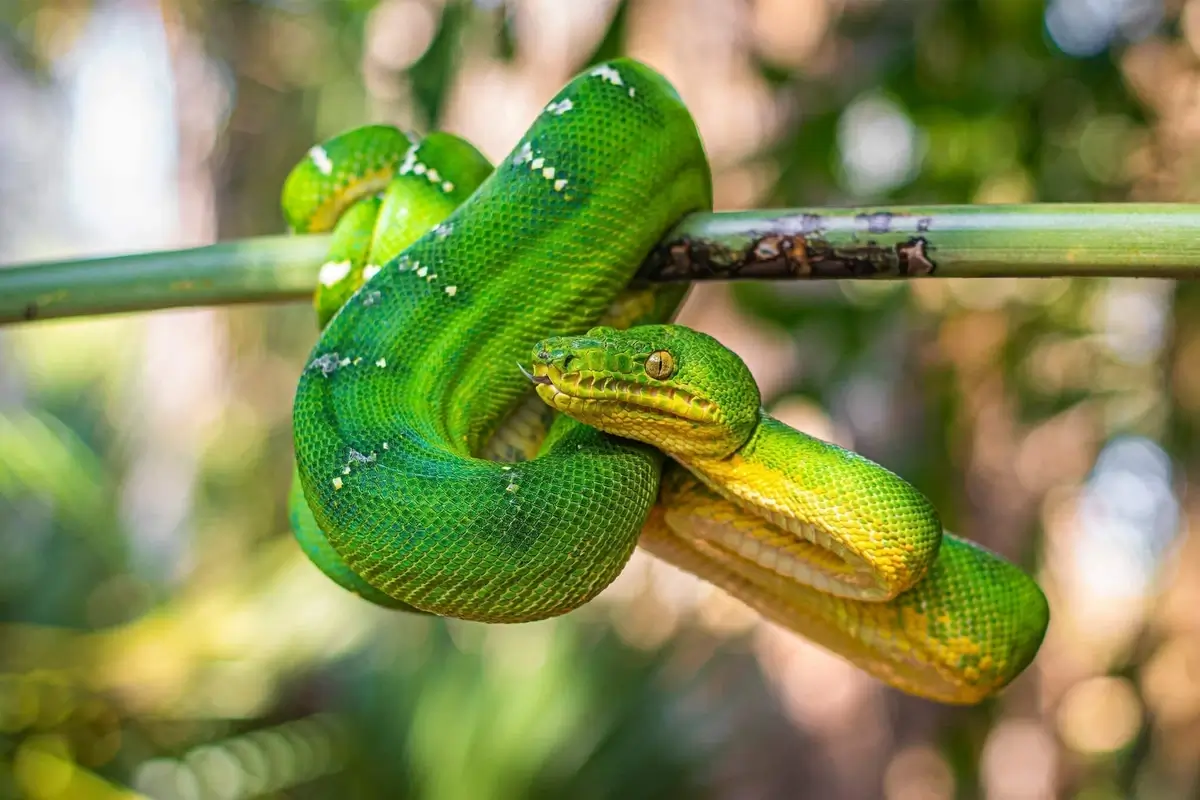
Image: brevardzoo.org
3. Not All Are Deadly: The Gentle Side of Rainforest Snakes
Assuming every snake in the rainforest is venomous? Think again! Research indicates that a vast majority, about 70%, of rainforest snakes are non-venomous. For example, the pythons found in Asian and African rainforests are master constrictors and not venomous.
Historically, these non-venomous snakes have been equally revered and feared. Indigenous communities have often viewed them as symbols of strength and regeneration, incorporating them into cultural narratives and rituals.
4. The Venomous Vipers: Lethal Rainforest Residents
While not all snakes are venomous, those that are pack a punch! Rainforest vipers, particularly pit vipers found across the Americas, have a venom potent enough to incapacitate their prey swiftly. Historical accounts from the 18th century document early explorers’ encounters with these snakes, often highlighting the immediate effects of their venom.
One iconic representative is the Bothrops asper, commonly known as the Fer-de-Lance. Distributed across Central and South America, its venom can cause significant tissue damage. Beware: it’s one of the most responsible for snakebite incidents in its range!
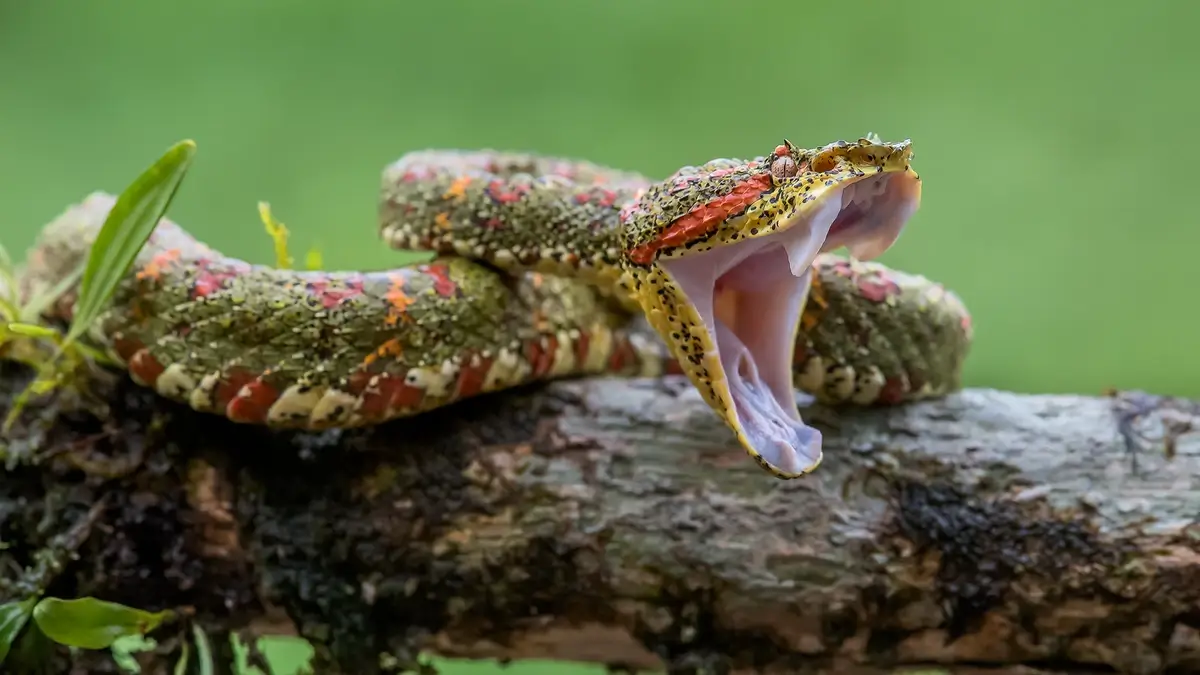
Image: backcountrygallery.com
5. Pythons’ Retreat: Living Large in the Rainforest
Pythons, though non-venomous, command respect in the rainforest for their size and hunting prowess. Historically, they’ve been revered, with some ancient South Asian cultures believing pythons to be protectors of treasures. Their habitat spans from the African rainforests, like the Central African Republic, to Asian rainforests in places like Borneo.
Reticulated pythons, found in Southeast Asia, hold the record for the world’s longest snake, with confirmed lengths of over 20 feet. Remarkably, in 2009, a python in Indonesia was reported to have swallowed a whole adult deer!
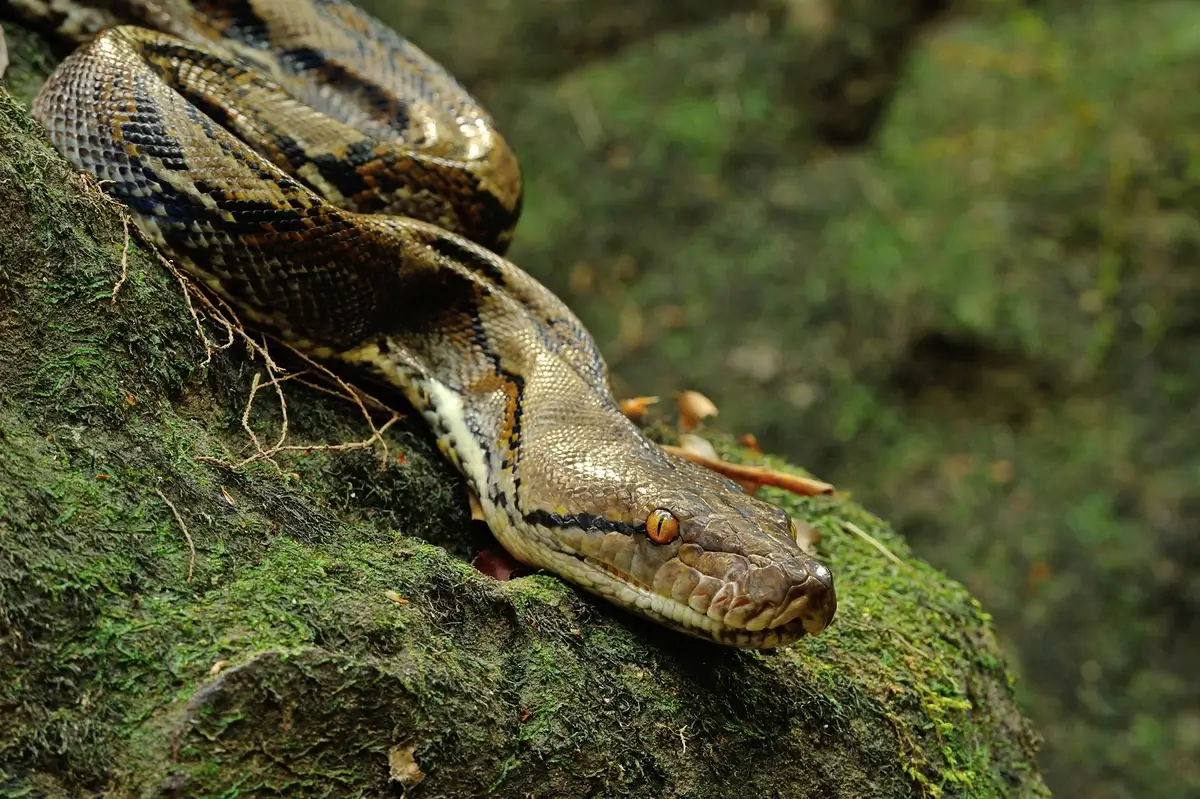
Image: Artfile
6. Eat to Grow: Surprising Diets of Rainforest Dwellers
The diets of rainforest snakes can leave many stunned. For instance, did you know some snakes in the rainforest consume prey larger than their head, thanks to a flexible jaw? Research in the 1990s confirmed this jaw flexibility, allowing snakes to swallow prey 75-100% bigger than their head size!
While smaller species might feast on insects, larger ones like the green anaconda don’t mind a capybara or caiman for dinner. It’s an eat-or-be-eaten world, and these snakes are determined to be on the winning side.
7. From Brazil with Love: Unique Snakes of the Land
Brazil, a country synonymous with the Amazon, is home to a vibrant array of snake species. Historical records and indigenous stories from the 16th century depict various interactions between tribes and these reptiles. The Amazon rainforest in Brazil alone houses over 60 unique snake species.
One of these is the stunningly iridescent Rainbow Boa, aptly named for the shimmering colors on its scales. Then there’s the Corallus hortulanus, or Amazon tree boa, a snake that exhibits vast color variations, from pitch black to fiery red.
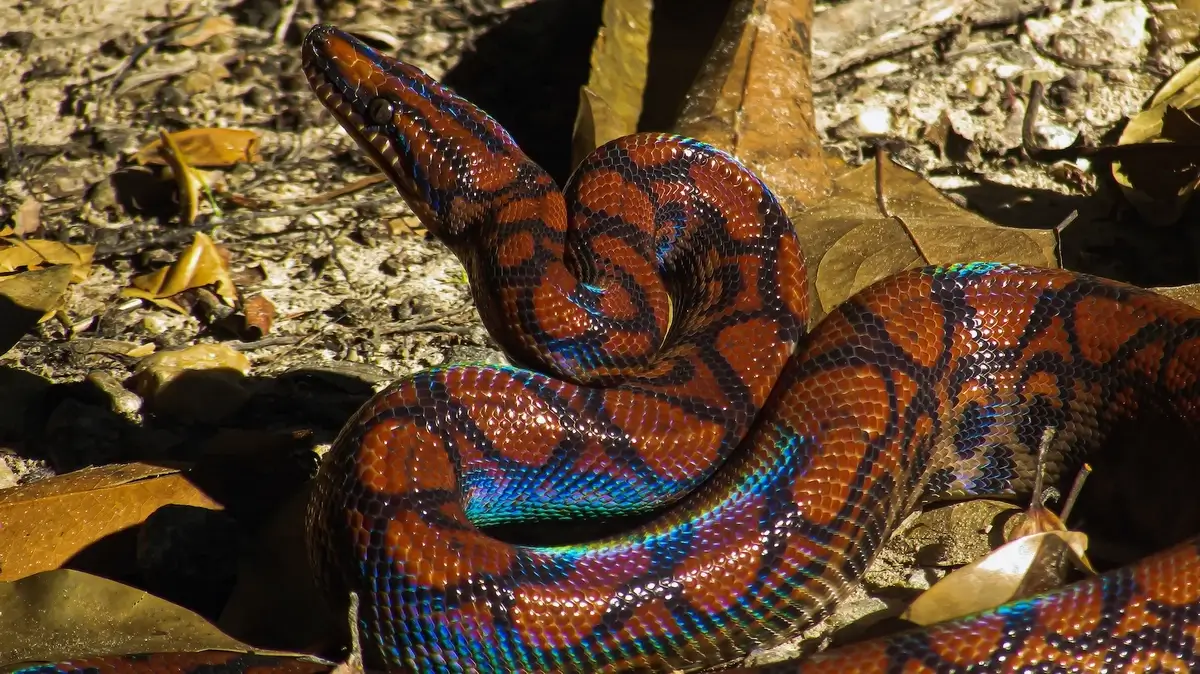
Image: color-meanings.com
8. Hide and Seek: Master Camouflagers of the Rainforest
Survival in the dense rainforest requires craftiness, and what better way than blending seamlessly with one’s environment? Several rainforest snake species are experts in this game. Scientific studies in the early 2000s highlighted the incredible adaptability of snake skins, allowing some to even change colors based on their surroundings.
One standout is the Gaboon viper, found in African rainforests. With a pattern resembling fallen leaves, it can lie undetected on forest floors for hours, waiting for prey. Its camouflage is so effective, there are tales of people unknowingly stepping right next to one!
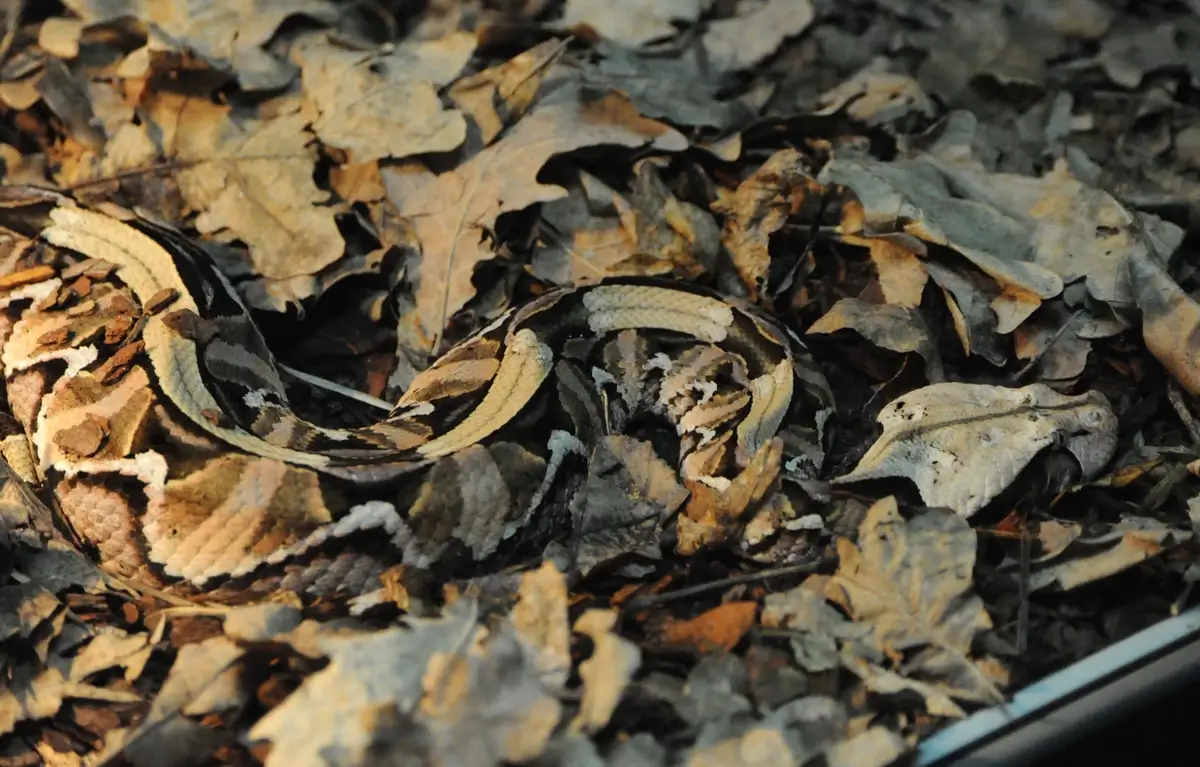
Image: zoogalaxy.net
9. Colorful Communication: What Snake Colors Really Mean
While humans rely heavily on speech, snakes use color for communication. In the dense tropical rainforest, vibrant colors and patterns aren’t just for show; they can mean “Stay away!” or “I’m perfectly camouflaged here.” Some research indicates that the bright colors of venomous snakes serve as a warning sign to potential predators, saying, “Mess with me, and it won’t end well!”
But it’s not just about deterrence. Snakes like the green vine snake have colors that seamlessly blend into their environment, making them virtually invisible to both prey and predators.
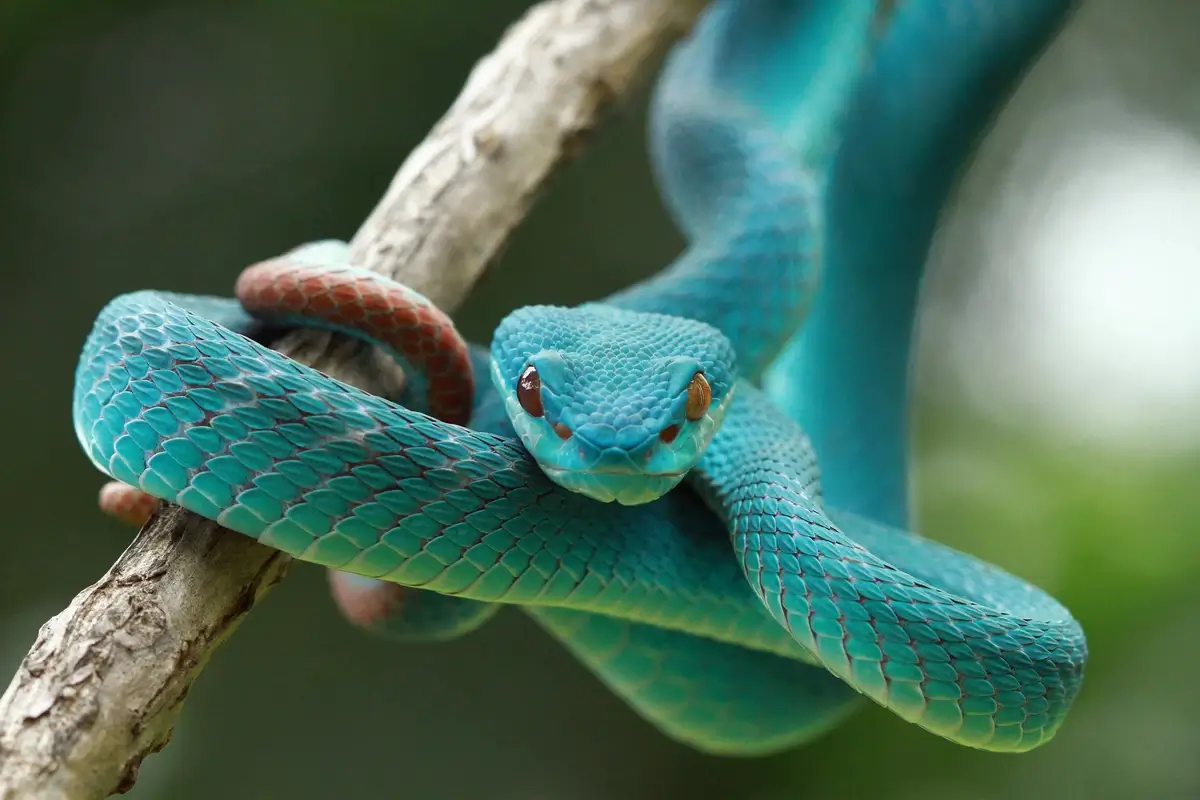
Image: pestwiki.com
10. Built for the Climb: Rainforest Snakes That Defy Gravity
The rainforest canopy is a bustling hub of activity, and some snakes have evolved to thrive there. Snakes like the tree boa have uniquely structured scales that offer better grip, allowing them to navigate the treetops with ease. In the 1990s, researchers studying these snakes observed their remarkable ability to stretch and hang between branches, catching prey on the move.
For these arboreal snakes, the canopy isn’t just a feeding ground; it’s also a place for mating, shelter, and even escape routes from ground-based threats.
11. Not Just for Land: Aquatic Rainforest Snake Adventures
Think snakes are just land lovers? Think again! The rainforests, especially in South America, are home to a variety of aquatic snakes that thrive in water. Research in the late 1990s showcased the unique physiological adaptations these species underwent to live and hunt in aquatic environments.
Take the Tentacled snake, for instance. Native to Southeast Asia, this snake has, you guessed it, tentacle-like structures on its snout, helping it navigate murky waters. Or the Water Anaconda, which, despite its hefty size, is an agile swimmer, often ambushing prey from beneath water surfaces.
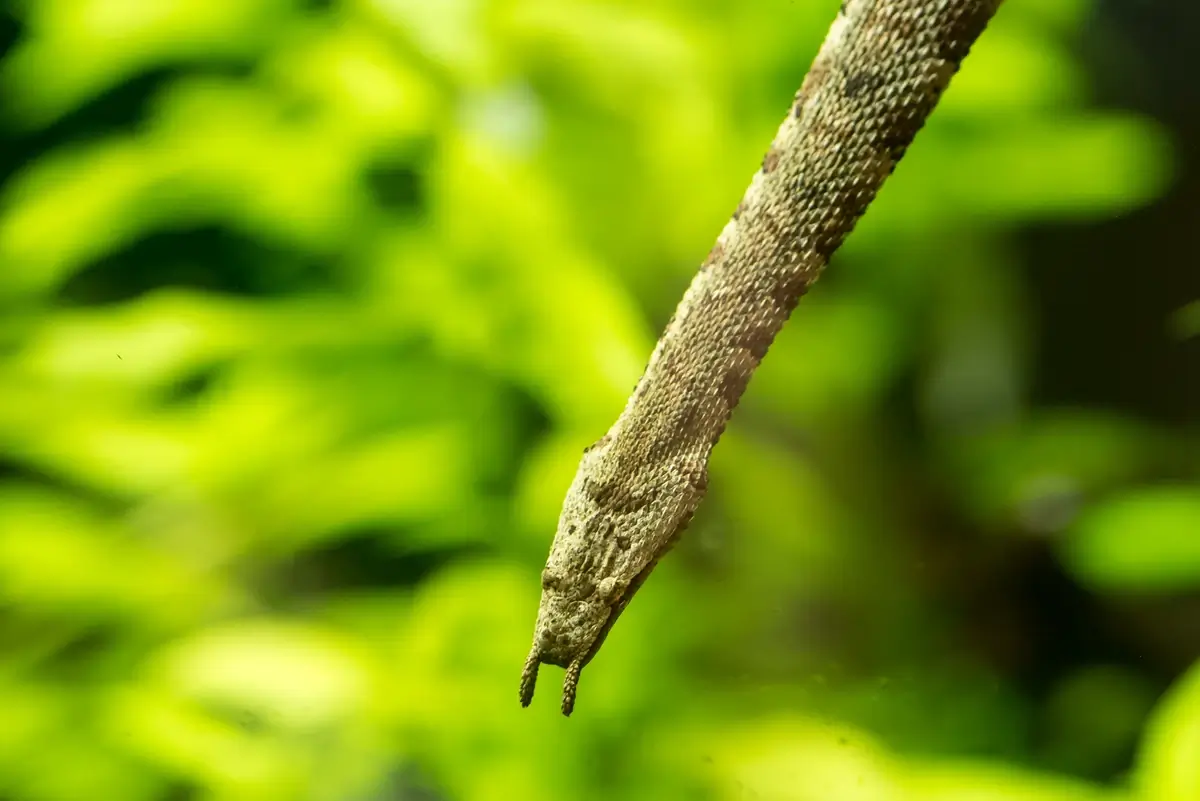
Image: staticflickr.com
12. Tiny Titans: The Smallest Snakes in the Rainforest
When we think of rainforest snakes, giant pythons or anacondas might come to mind. But the rainforest also shelters some of the world’s tiniest snakes. The Barbados threadsnake, discovered officially in 2008, measures just about 4 inches in length, roughly the size of a pencil!
These miniature marvels, though diminutive in stature, play a significant role in the rainforest ecosystem. From controlling insect populations to serving as prey for larger predators, their size doesn’t diminish their impact.
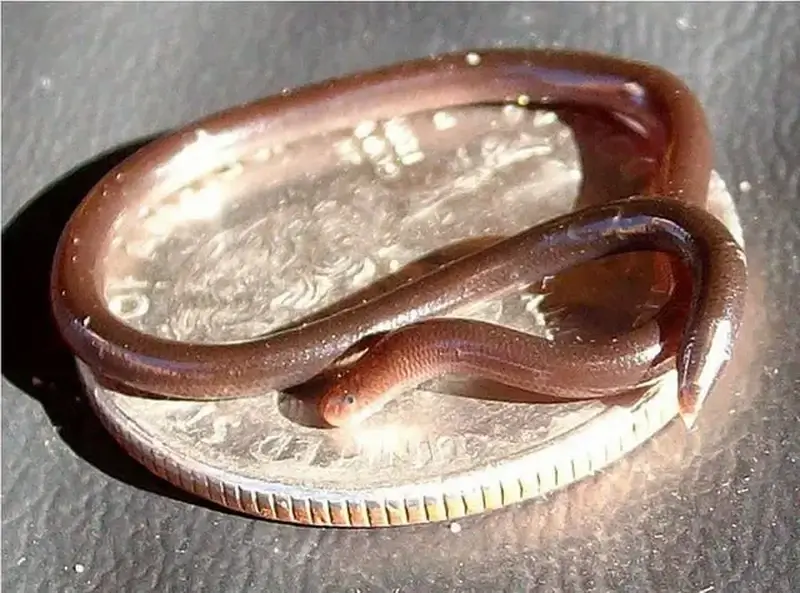
Image: creaturefacts.wordpress.com
13. Temperature Dictators: Body Heat Secrets Unveiled
Here’s an interesting fact: snakes are ectotherms, meaning their internal body temperature is regulated by the external environment. This is particularly crucial for rainforest snakes, given the vast temperature variations in their habitat. Studies in the early 2000s underlined the lengths snakes go to maintain optimum body heat.
From basking in sun-drenched clearings to seeking shelter in cooler, shaded undergrowth, these cold-blooded creatures masterfully dictate their temperature needs. Such meticulous thermoregulation ensures they remain active hunters, ready to strike when an opportunity presents itself.

Image: wallpaperset.com
14. Moonlight Serenades: The Cat-Eyed Snake’s Nighttime World
While we might associate the rainforest with daytime vibrancy, there’s a whole other world that wakes up at night. One of the stars of this nighttime spectacle is the cat-eyed snake (Leptodeira septentrionalis). This serpent, predominantly found in Central and South America, has earned its name from its large, round eyes with vertical pupils – a stark contrast to the daytime snakes with round pupils.
These eyes aren’t just for show. They provide the snake with exceptional night vision, aiding them in hunting prey like frogs and their eggs, which are particularly active during the nighttime. Historical records and indigenous tales from areas like Brazil and Nicaragua even highlight the cat-eyed snake’s prowess and its cultural significance as a symbol of the mysterious nocturnal rainforest world.
Studies show that these snakes play a pivotal role in controlling the population of certain amphibians, ensuring a balanced ecosystem. The rainforest, with its cacophony of nocturnal sounds, pulses with life even when shrouded in darkness. The cat-eyed snake is a testament to nature’s round-the-clock marvels.
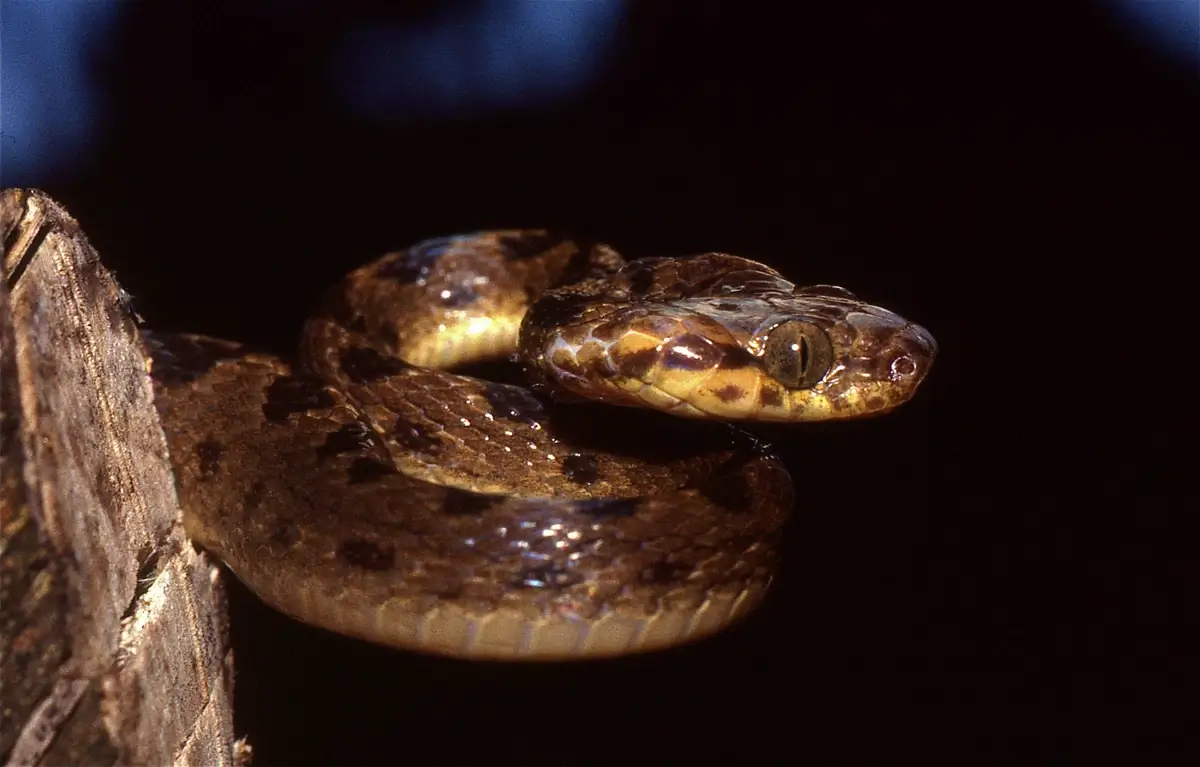
Image: Wikimedia Commons
15. Legacy at Risk: The Threats Rainforest Snakes Face Today
Sadly, not all fun facts about snakes of the rainforest are cheerful. The modern world poses grave threats to these slithering wonders. Deforestation, pollution, and even the exotic pet trade have seen many snake species numbers dwindle. Reports from the 2010s underline the alarming decline in certain snake populations due to habitat loss.
The Yellow-tailed Cribo, native to Central and South America, has seen a decline in its numbers, predominantly due to habitat destruction. It’s a pressing reminder that these mesmerizing creatures, integral to our ecosystem, need our attention and care more than ever.

Image: scmp.com
FAQ
How many snakes are in the rainforest?
Estimating the exact number of snakes in the rainforest is like trying to count the stars in the sky. However, in terms of species, the Amazon Rainforest alone houses over 140 different snake species. Other rainforests, such as those in Central Africa or Southeast Asia, also have a rich diversity of snake species. Combined, rainforests worldwide are home to hundreds of unique snake species, making these ecosystems a veritable paradise for herpetologists.
Why are snakes important to the rainforest?
Snakes play a pivotal role in maintaining the ecological balance of the rainforest. As both predators and prey, they help control the population of various organisms. By feeding on creatures like rodents, they keep these populations in check, preventing overgrazing and ensuring plant diversity. Moreover, snakes themselves are food for larger predators like birds of prey and big cats. Their presence indicates a healthy, functioning ecosystem.
What do rainforest snakes eat?
Rainforest snakes have a diverse diet. Most are carnivorous, preying on animals such as rodents, birds, amphibians, and even other reptiles. Larger snakes like the green anaconda can consume bigger prey, including deer and caimans. Some species specialize in certain prey; for instance, the aptly named bird-eating snakes focus primarily on avian meals. Insects and eggs also form a part of the diet for smaller snake species.
What is the biggest snake in the rainforest?
The title for the biggest snake in the rainforest goes to the green anaconda. Found predominantly in the Amazon and Orinoco basins in South America, these massive reptiles can grow up to 30 feet in length and weigh as much as 550 pounds. Their sheer size allows them to take down and consume large prey, including jaguars on rare occasions!
What is the most venomous snake in the rainforest?
The rainforest boasts some of the world’s most venomous snakes. One of the contenders for the most venomous title is the black mamba, native to the rainforests of Africa. However, in terms of potency, the inland taipan of Australia is often considered the most venomous, though it’s not native to tropical rainforests. The Amazon rainforest has its own venomous superstar: the lancehead pit viper, whose venom can be lethal to humans.
Do all rainforests have snakes?
Yes, all rainforests, whether tropical or temperate, have snakes. The species vary based on geography, climate, and elevation, but these ecosystems are rich and diverse enough to support a myriad of snake species.
What are rainforest snakes called?
There’s no specific name for “rainforest snakes.” Instead, they are identified by their individual species names like boa constrictor, green anaconda, or tree boa. The term “rainforest snakes” is a general descriptor for snakes that inhabit rainforest ecosystems.
Do snakes live in the rainforest floor?
Absolutely! Many snakes prefer the dense undergrowth of the rainforest floor. This environment offers them ample hiding spots, protection from predators, and a rich buffet of prey. Species such as the fer-de-lance and the Gaboon viper are often found in these lower layers of the rainforest.
Do flying snakes live in the rainforest?
While no snake can truly “fly,” some species, like the paradise tree snake or the golden tree snake, have mastered the art of gliding. Native to the rainforests of Southeast Asia, these snakes flatten their bodies and launch themselves from treetops, gliding gracefully to cover significant distances. So, while they don’t have wings, they indeed are the aviators of the snake world.
How do snakes get water in the rainforest?
Snakes, like all animals, need water to survive. In the moist environment of the rainforest, getting a drink isn’t too challenging. Snakes often sip from puddles, streams, or droplets on leaves. After a rain shower, it’s not uncommon to see snakes with their mouths open, catching raindrops. The high humidity of the rainforest also ensures they stay relatively hydrated compared to their counterparts in drier habitats.


